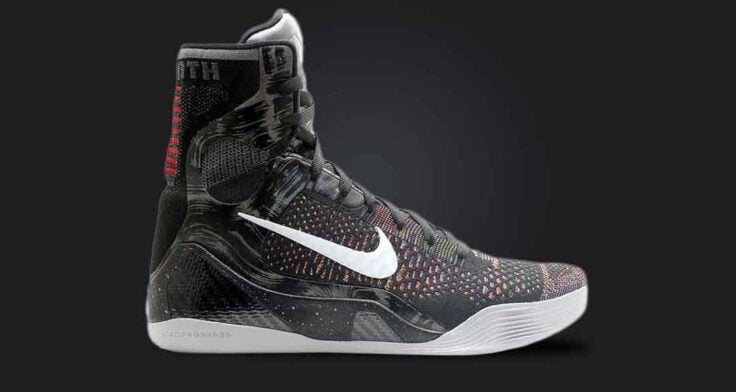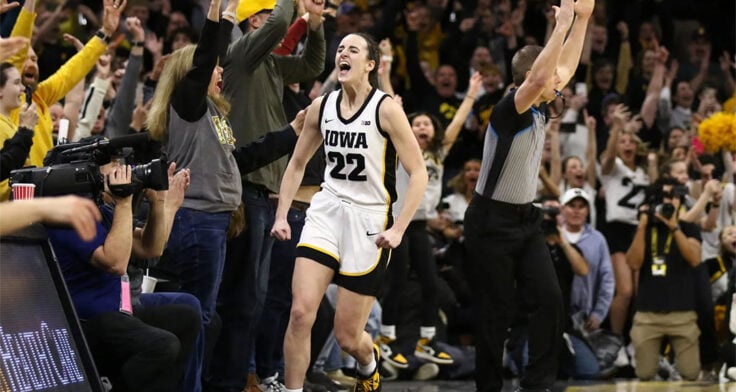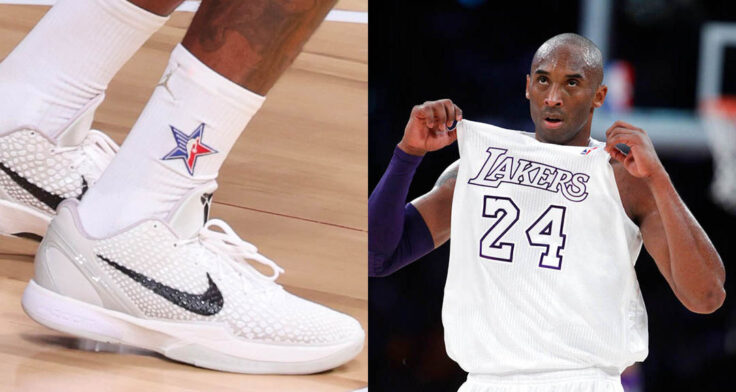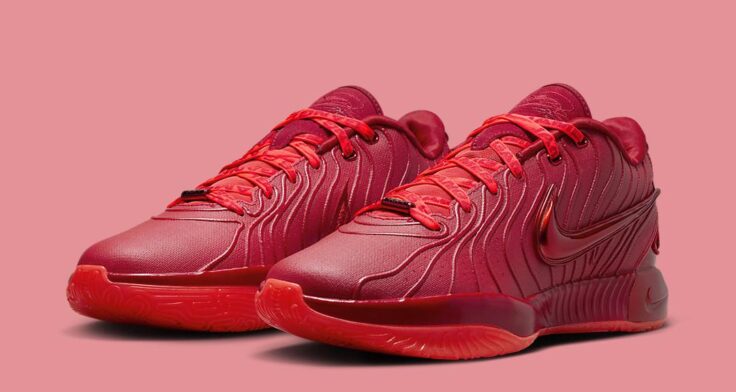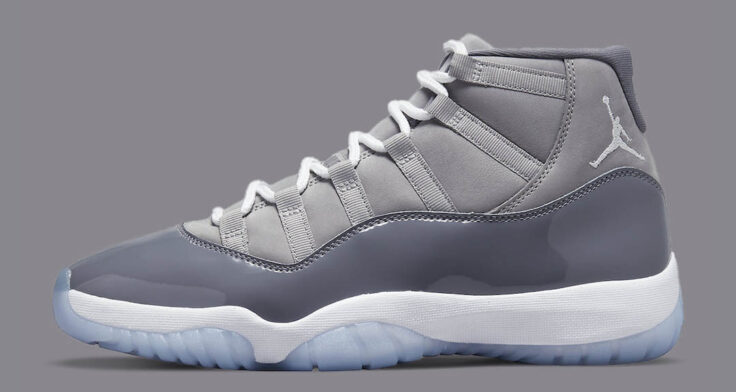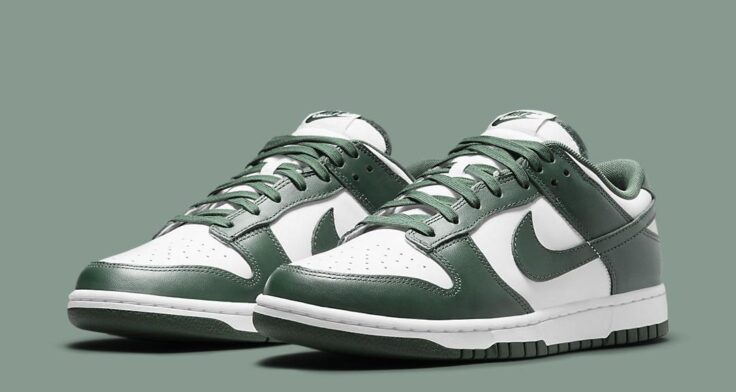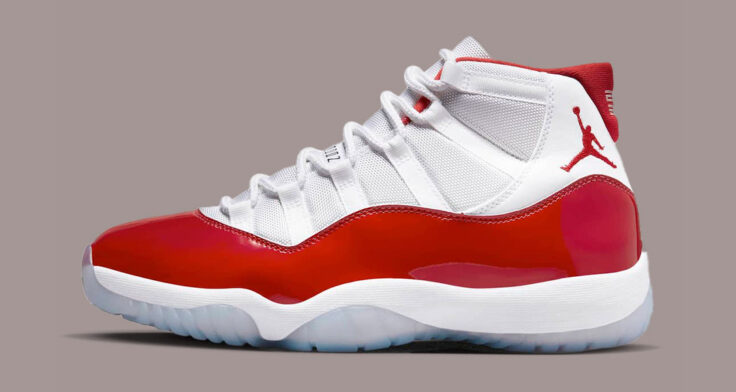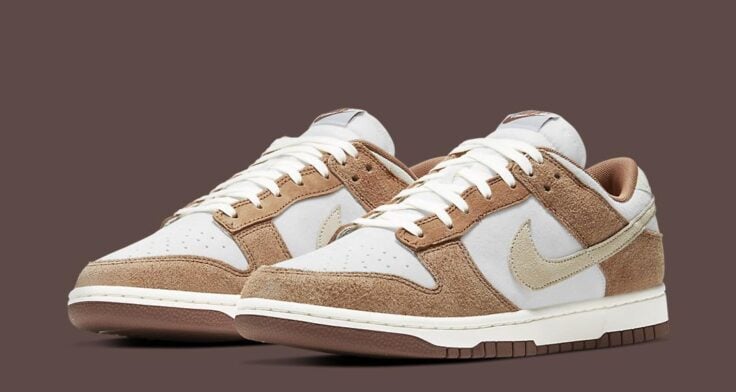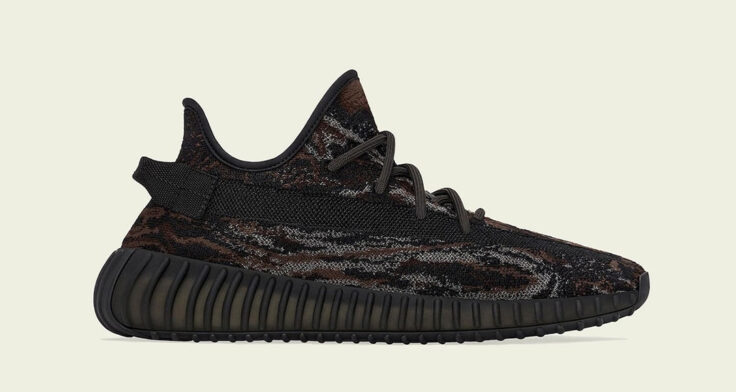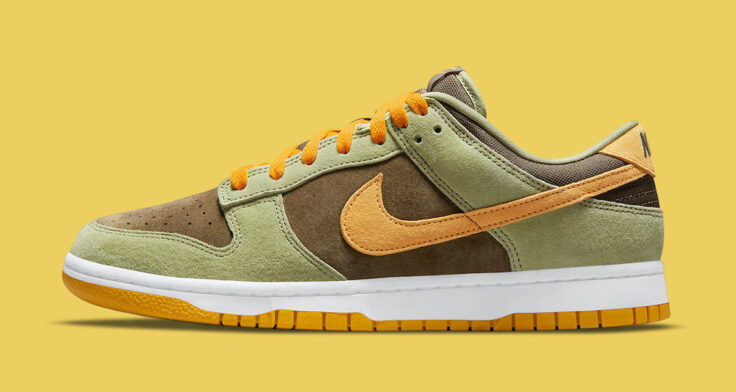words, photography & interview // Nick DePaula
Kevin Durant portraits courtesy Nike
In sports and sneakers, Kevin Durant is a rarity. There’s a loyalty and a sense of pride for KD that we’ve seen time and time again, whether it was during his heartfelt MVP speech, his constant dedication to his Oklahoma City Thunder squad, or the now-two times he’s spurned bigger offers from competitors because he just wanted to wear Nikes.
If you remember, KD turned down an extra $10 Million from adidas to sign with Nike before his rookie season in the NBA. Last summer, he ultimately stuck with the Swoosh again, after a very public courting from Under Armour.
During that time, I had heard rumblings that he was so enamored with the early stages of the KD 8 and his eventual legacy with Nike Inc., that he certainly wanted to stay with the only brand he’s known.
“When I first tested the KD8, I instantly loved it,” says Durant. “I didn’t want to take it off.”
With loyalty a looming theme in Durant’s life, it should come as no surprise that he’s also spent his entire signature sneaker history with one designer — Leo Chang. The current Nike Basketball Design Director recently caught up with Nice Kicks to detail every last ounce of the new KD 8, Durant’s most technologically packed (and as you can imagine, most high priced) sneaker to date.
Read ahead for an in-depth look at Leo’s design process, the engineering of the full-length Zoom bag, insights and involvement from Kevin, and just how hectic things got last summer as KD went through his very public sneaker free agency negotiations.
Nick DePaula: Every time you do a new KD shoe, it always starts with you sitting down with Kev and asking him what he’s looking for. What were some of the personal requests from the start on this one? In the past, he’s been back & forth on wanting a strap. The last three ones now have all been lows too. What were some of the things that he mentioned for the 8?
Leo Chang: With him, we always go back to discussing what he always wants in shoes; what the constants are. In the upper, he wants it to be “light and tight” on his foot. A lot of times on the upper, he’s looking for less materials and no stuff that gets in the way, like overlays or any irritation points. He likes to keep any distractions from a fit standpoint out of the way. From a feel standpoint, it’s always about responsiveness. That ride has to be responsive and instant, but it has to feel smooth too. He has an efficiency and a gliding movement that not all players have. LeBron doesn’t run as smooth, and he’s more of a freight train. When you look at the style of how KD moves on court, it’s smooth and he wants that instant response. We try to capture that in different ways.
Then, there are things that each season may change for him. This time, he said, “Lets stay low, but lets not do a strap.” He can play in a lot of different heights, but I think he’s most comfortable in a low. He just loves the way it feels because it’s light and gives him that range of motion. Every now and then, he likes to flip it up and go with a mid. This time around, he specifically asked for a low.
Going back a bit, he had been also asking for a full-length Zoom bag. So on the Elite 6, we gave him that existing bag that we had. We go through the process, and we learn a lot, and that was something that we both learned – that wasn’t right for him. I don’t want to say it was a good failure [laughs], but it was a good learning experience for all of us.
He really wanted it, and had been bugging me for years for that. When we gave it to him, he loved it at first and wanted to love it, and then I think he realized it didn’t work for him. He just said, “Man, it felt too heavy.” It felt like he was running in mud, and the style of play for him wasn’t right. It was slappy and it was heavy.
What I loved though, was because it didn’t work, it gave us some guardrails for this one, and he was able to articulate that it wasn’t flexible enough, it was too heavy and it was slappy. That gave us the ammo to then create a bag that would actually work for him, from the ground up. We now knew exactly what he needs. I love those moments, when you can have something not go right, but learn from it.
NDP: That’s one thing that I was going to ask too. I was really curious how the bag began. Sometimes, the Innovation team in the Kitchen will have a unit they’re working on that your team can then bring into a model. I think he only wore the 6 Elite for maybe a game and a couple quarters, and then went back to the regular 6 in the Black / Grey / Blue colorway for that whole playoffs. So the bag for the 8 began from that insight, and that helped in the decision to make it a bottom-loaded Zoom unit?
LC: Yeah, and the other bag was too high off of the ground and didn’t allow him to feel the court like he wanted. All of those things led to us looking to make this bag feel lower, be more flexible, be lighter and have better transition.
above: The articulated full-length Zoom Air bag in the KD 8.
NDP: What’s the size of the bag all the way through?
LC: It’s 10 mm the full length.
NDP: Sweet. And as you guys were going through the process, I’m sure there were learnings along the way for where to stabilize the bag. How’d you guys land on the two sidewall rubber wraps through the heel and then the two TPU bars along the forefoot to give the bag the right support? Was that an engineering aspect that took some time?
LC: We kind of landed on the location of everything pretty quickly actually. We didn’t deviate too much. The flex groove pattern, we landed on that quickly and stayed on that too. Then, the TPU clips on the side, we added in later on after finding that the forefoot wasn’t stable enough without them. When you look at the design, it’s almost the reverse of what running does. Running has that lateral heel crash pad for slowing down the rate of pronation and the slappiness that happens when you run.
We have it opposite, and obviously you know Nick, cutting happens on the medial side and then you throw yourself laterally. We wanted to have the heel flex groove more on the medial side, and that could help to decouple that more and more when you transition from heel to toe. Then, when you look at the forefoot flex grooves, they’re on the lateral side to help break up the forefoot. Then, we joined it on the first met head, because that’s where you want that power toe off. You want that responsiveness and cushioning under there for when you toe off.
NDP: A big component of this shoe was the fact that he was hurt last summer, and oftentimes the summers are when you get a lot of feedback for future products a year out. Did the injury impact the amount of time he was able to weartest the 8?
LC: You know what, we actually caught him and got him his size to wear last summer, right before the fracture happened. That was a great blessing to have that early feedback and that early confidence from him. Otherwise, yeah, we would’ve been really behind the ball. We would’ve been doing some last minute testing on it now to get him ready for the season. To get him bought off on the fit and feel of the shoe then was awesome. We got that out of the way early. It was great, because we had a closed door session where he was trying it on, and he was just ecstatic over it.
He’s such a mellow dude usually, and it was awesome to see him get so giddy like a kid. He was joking, “I feel like I’m 16 again!” because of how excited he was. He said it felt like he had nothing on his feet. He was doing windmill dunks and then saying, “Man, I don’t ever do that!” [laughs] It was cool to see him that excited over it.
We’re working on the 9 now, obviously, and I recently asked him, “Hey, what’s the perfect feel for a shoe you’ve worn or would want to have?” And he was like, “Man, the last perfect shoe that I’ve worn was the 8 actually. It just feels so good on my foot.” That was a great validation on the shoe from our standpoint.
NDP: The LeBron X was actually probably my favorite visible Zoom bag execution in recent time – I just thought it was outstanding –
LC: Did you play in the 6 Elite?
NDP: I did, but I had some of the same feedback as KD. Because of how low the cut was, it felt high off the ground still. The balance and protection wasn’t there.
LC: The upper on the LeBron X complemented that bottom a lot more.
NDP: Totally. And I’d always tell people, the X was probably a couple ounces heavier than my ideal shoe, but as a total package, I liked it so much that I didn’t care about the weight and just kept playing in it. I’m always switching in and out of stuff, but I was wearing those waaay after I was done reviewing it. For that X bag, we saw it in the HyperPosite 2 and then in some other shoes. Is this Zoom bag going to be something we see carried out across the line, or will it remain specific to KD?
LC: Right now, it’ll just be for KD, but you’re going to see Zoom a lot more in our line.
NDP: Cool, I’m a big fan of that answer. [laughs]
LC: I figured. [laughs]
NDP: Whether it was the 7 or the 6 Elite, like we talked about, there’s been times where he has been picky and not afraid to go back to other stuff. Was part of the learning with the 7 – and this was my own take too – that the Foamposite collar was just a little too firm and didn’t really contour the way you’d want? Was that part of what led you towards using the one piece woven upper here on the 8?
LC: For sure. We wanted to get back to that lightweight feel that he likes. The Posite thing was another one that he’d been bugging me about for years. I remember him telling me, “Yo, we gotta do a Posite 6!” I was like, “Yeeeeah, I don’t know about that. We’ve gotta do it the right way.” We’re not just going to do a heavy Posite, because it just wouldn’t work for him.
There are things that he definitely loves from a cultural standpoint that we try and make work for him, but it’s a balance. He’ll throw us these ideas, and we’ll try to make it work for his style of play. Sometimes, we get it absolutely right, and sometimes, it’s a great learning experience for the next time, so that we know if we do it again, we need to change this, this and this.
NDP: You’re using the Flyweave woven upper here, and from a broad sense, how is that different from a Flyknit or an engineered mesh upper that we’ve seen in some of the Kobe products?
LC: In basketball, and you’ve been with us for the journey, we always talk about the Hyperdunk in 2008 being a defining moment for us and a new era for innovation in basketball. Before, it was always a leather or a synthetic leather upper on a crazy innovative bottom. Not to say there weren’t innovations that happened on the upper – there were – but really the explosion in innovation throughout the whole shoe started with the Hyperdunk in 2008.
That helped to really push us. It was a weird time, if you remember, and a lot of Retro was big, Air Force 1 was big, skate, and it was a huge risk for us to go in that direction. It was awesome though, because we set our focus on innovation and really pushed that for performance.
That journey then led us to Hyperfuse in 2010, with composite materials with mesh and more breathability. That was awesome because then by 2012, we were pretty much off of leather and traditional ways of doing leather. Now, I feel like, in our line we’ve made another shift towards these engineered textiles.
Whether it’s Flyknit or engineered meshes with Kobe, or this Flyweave as well. It’s a great shift for us to get into using these natural feeling materials that we can engineer to fit better for the needs of basketball.
For the KD 8, there’s always this 50/50 thing for us. KD is asking for things and he knows what he wants from a fit, feel and style standpoint, and then there’s things behind the curtain that he doesn’t see that we’re working on, and that’s what I bring to the table for him. I always filter out what’s right for him. “That technology isn’t, this one is!” That sort of thing. The weave just felt right, because it’s a woven material, and by nature it’s more of a linear and cross-linear structure. Inherently, it’s more stable through the stretch.
LC: Knit is awesome because you can build really incredible and stretchy booties, but it’s harder for it to be stable enough for basketball without reinforcing it a lot. That’ll obviously progress in the future, and for us, it felt right to go with this weave material here. It’s cool because you can change not only the denier of the yarn that’s put into the shoe, and some are a little more packed and higher resolution for less stretch.
You can also split the material itself. So instead of the material being 100% thickness, you can split it into 40% to 60% to create a pocket. That’s what we did in the forefoot and then in the arch of the shoe. In the forefoot [above the toe box], we wanted to give that zero distraction and seamless feel, so we moved the vamp and the u-throat ending up higher. We put a pocket in there and added the dynamic Flywire cables in there, with some foam to help moderate everything. It feels even more integrated into the package.
In the arch, we added a pocket that provides more conformability. The material is split and it loosens it. The arch is an area for basketball where you see a lot of dynamic motion. You see a lot of twisting and wrinkling, and you want the shoe to feel like it can make it through those motions. We used that arch pocket to give you better fit in that zone and also flex right. We were even able to add the reinforcer material right into the package on the eyelets, so that you won’t pull too hard and blow through the material. That was all really cool from a material standpoint, and it allowed us to seamlessly add everything in that we’d need for the upper to be fully supportive.
NDP: And even though it looks like a simple one-piece upper, it was cool noticing all of that variation and detail up close once I saw the shoe in person. I noticed the tongue being moved up right away, and I think it was the HyperEnforcer that was the first shoe with that, which I loved playing in from a fit standpoint.
LC: It just gets all of the excessive and extra materials further away from the foot.
NDP: The sabertooth tattoo of his seemed like an overt inspiration here for the heel counter. I saw you had a few designs with different counter shapes, so how’d the tattoo come into play?
LC: We started out pretty simple, and had sort of a Huarache band wrapping around the heel as the counter. That’s what we presented to KD in the first round sample, and he liked it, but then when he had some time to digest it more, he said, “You know what, it looks a little too Kobeish.” That’s been kind of an icon of Kobe’s, not that other shoes haven’t had a counter, but iconically, if you look at the Kobe 8 and 5, all of those had a kind of heel clip look to them. Even though this one isn’t plastic, and it was the midsole extending up, but just from an iconic standpoint, he thought it felt too similar to that. I said, “Ok, now that you mention it, I kind of agree.” [laughs]
So I went back and reworked that to make it iconically different. I went through the sketching process for that, and I was just drawing shapes and it was kind of annoying. [laughs] I needed some grounding for it, and I needed it to be grounded in him and something that means something to him. That’s what makes it signature, right?
I didn’t want to just draw a random shape, and it had to be meaningful. It was literally weeks before that, he had just gotten the tattoo. He explained why he got it, and it was kind of weird. [laughs] I was like, “Oh, a sabertooth. That’s different. That’s interesting.” [laughs]
NDP: Especially for a guy that doesn’t have as many visible tattoos and usually hides them all.
LC: Yeah, exactly. So he talked it through, and said he liked it because it was different. A lot of guys have lions, tigers or leopards or whatever. He goes, “Well no one has a sabertooth. It’s a prehistoric animal, and it’s a tiger with big teeth. It’s a different beast.” He loved that attitude of it, and it was something with a killer instinct that he identified with. Because it’s prehistoric, it has this old soul to it, and he feels like that’s him. It’s this killer animal that has an old soul. We were joking about it, and I was like, “It’s kind of this ice age killer or a cold-blooded killer.” [laughs] It was cool you could riff of that, and it definitely relates to him. From a narrative standpoint, we thought it was a nice tie-back to him and it definitely changed the icon of the shoe to be more unique.
above: An original sample of the KD 8, featuring the “Kobeish” heel counter design and Leo’s tape sabertooth re-design.
NDP: Something I have to ask you about is the price. I think it being $180 overshadowed everyone’s opinion of the shoe when they first saw it. Going back to the KD 2 and 3 – which were some of my favorite playing shoes ever – they were $85 and $88 and KD was proactive in saying he wanted to have an affordable signature sneaker. How’d you guys land at $180? Was the Zoom bag and platform a big component of that, and was there any hesitation from either side as you guys got to land on that higher price tier?
LC: For us, we wanted him to continue to lead with innovation. All of the signature guys, they’re competitive, and they’re always looking at eachother’s footwear and he’s looking at what Kobe is doing and looking at what LeBron is doing. Everyone is looking at eachother, and for them, we wanted to be competitive with the innovation that we brought to KD and give him that same advantage. With the Zoom bag, he had been talking about full-length Zoom for awhile. We told him, “Hey, Zoom comes with a cost too.” He felt good about that. He said, “Ok, I understand. That’s something that I want.”
With the weave, that also came with cost to use that technology and get that fit. Those are things that he really wanted, and he really was about the performance first and getting that right. We also knew that we have the Trey5 as well, which came in the line with the KD V. [Note: The KD V was also the first Durant model to break the $100 threshold and was priced at $115.] That shoe is at the $110 price point, and it’s very accessible and is a great versatile shoe for a lot of players, and kids can get into that shoe if they want to. We knew that we wanted to bring more innovation into his game shoe, while we also have a great Trey5 shoe in that more accessible zone.
NDP: Obviously, the big story all last summer was his endorsement deal being up, him negotiating with other brands and then ultimately, him re-signing with you guys. You were working on the 8 during that process, and what was it like being involved in the entire process and how were you feeling as it played out?
LC: Yeah, it was definitely a stressful time. [laughs] I kind of felt like every time I met with him or talked to him, it could’ve been my last. It was kind of wild. Literally, there was a moment where he was right in the thick of all of that, and there was a lot in limbo. He was at a kids camp he was doing in OKC, and he was with our sports marketing guy, Chuck Terrell. Chuck was like, “Yo, KD wants to see the shoe right now, the 8.” I was like, “Ok, sure.” So we got on FaceTime and I showed the shoe to him again and told him where we were at with it. He had seen it and worn it earlier in the summer of course, but he just wanted to see the latest on it. It was just a weird moment though, and I was like, “Man, this could be the last time we show him a shoe or talk to him.” It was kind of crazy.
The news blew up for sure, and there was a lot that was overexagerrated and a lot of non-facts put out there. More than anything, he’s a Nike guy. I talked to him after it all, and he just said, “Man, I’m always a Nike guy. It’s been like this since I was a kid. I didn’t ever want to leave.”
He knew too that going to another brand would be a lot of work to build his own brand and his products back up to the level he was already at. That’s the conversation we had. It was definitely a weird time, and a lot in limbo, but we’re back on track now, and feeling like that weird stuff is behind us.
There were definitely moments where it felt like you had to watch what you say and stuff like that, and everyone was really tense, and no one knew what was going to happen. There was a lot of money on the table, and you can’t help but look at it.
But at the end of the day, you have to also peel back the layers and say, “Hey, it’s not just about the money. It’s about what you represent and what you want your personal brand and the product to be.” That was all really important to him, and ultimately what helped to make his decision.
NDP: There was definitely just so much uncertainty it seemed. With him re-signing at such a high number, did that add any pressure from executives to raise the price of his signature shoe too, to make the business more profitable? Or was the price of the 8 already decided by that time?
LC: The 8 price was already set, actually the summer before from a brief and positioning standpoint. None of that was really part of the deal.
NDP: Something I’ve always liked about KD’s line, whether it was the Wanda Pratt logo or the Big Chucky nods, he’s always had these cool logos and cues to highlight the people around him and his family. On the 8, it’s much more direct and has the names lined up along the outsole in plain text. What was behind that shift?
LC: I think it was about being a little more sophisticated with how we treated it on this one. It didn’t have to be random logos scattered throughout the shoe. We wanted to just bring it all together in a more sophisticated way here.
NDP: Well that’s all I had on the KD8 for you, and I’ve been really curious to hear all about the Zoom bag ever since I first saw it. Thanks for the time, as always.
LC: No problem! Thanks Nick.

